16 Mar Ahmedabad’s beautiful mosque architecture
the city’s fifteenth century stone mosques are works of art
The mosque architecture of Ahmedabad is a thing of beauty.
The city, founded by Ahmed Shah in 1411, is blessed to have a string of 15th century medieval marvels, all built during the Gujarat Sultanate (1403-1573). They were constructed by rulers, saints, royal women, noblemen, freed slaves….all vying for immortality with their exquisite constructions. Each of them is a work of art.
These buildings represent a unique Gujarat architecture style; merging Hindu and Islamic with grace and elan. A soaring mix of arches, domes, pillars, balconies, minarets carved with spectacular detail.
Most of the mosques are located within a few kilometers of each other and can easily visited within a morning. It’s a wonderful way to discover for yourself a rich layer of Ahmedabad’s heritage.
Start with the Sidi Sayyid Mosque
Located on a busy round-about in the heart of Ahmedabad, the much-photographed Sidi Sayyid mosque is famous for its breathtaking jaali windows, the design of which has even been adopted by the city as its mascot.
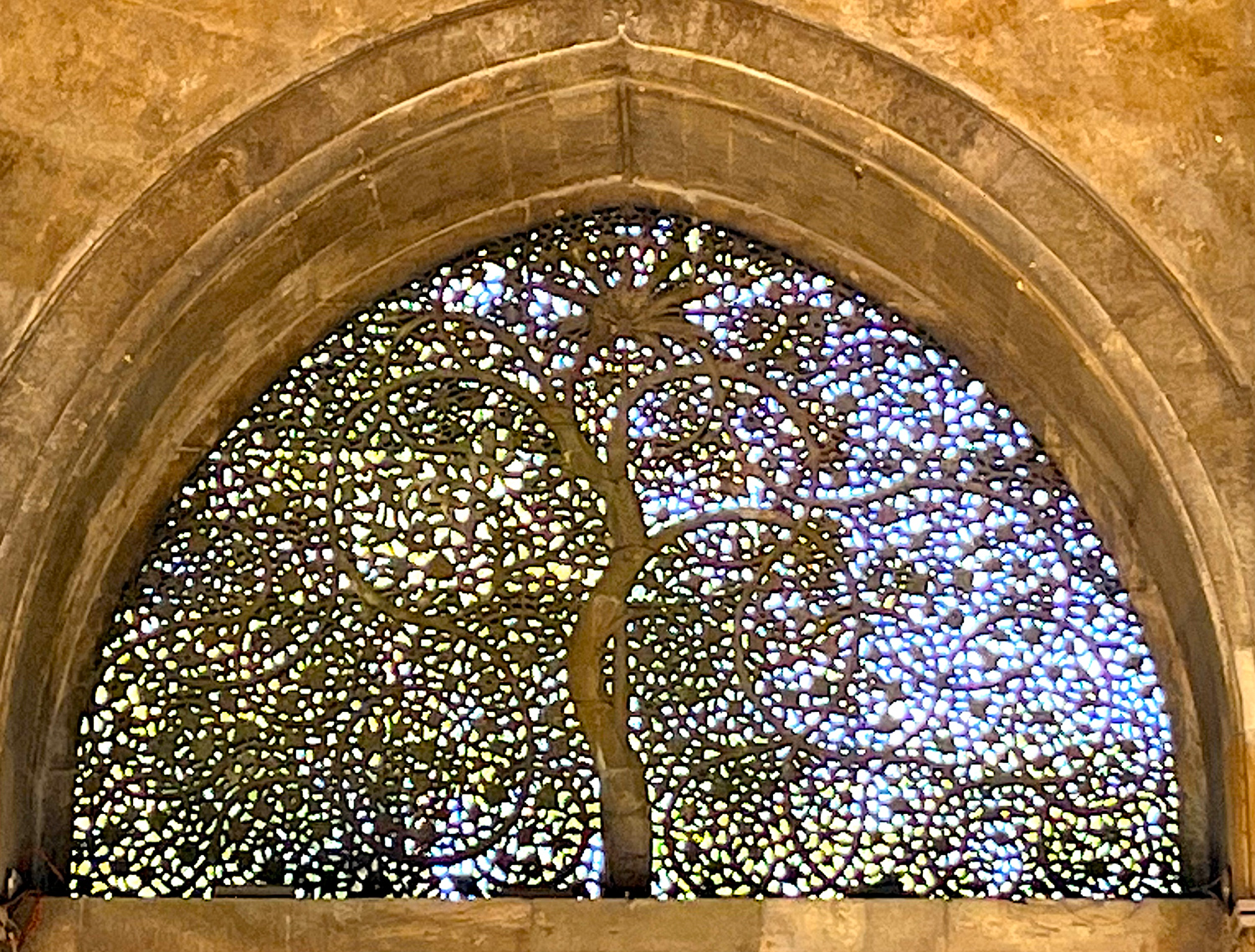 The awe-inspiring artistry of Sidi Sayyid’s ”Tree of Life” jaali window is adopted as Ahmedabad’s mascot
The awe-inspiring artistry of Sidi Sayyid’s ”Tree of Life” jaali window is adopted as Ahmedabad’s mascot
I visited Sidi Sayyid at nine in the morning, and the mosque was empty apart from a few tourists with cameras in hand. The mosque itself is small – just 5 arches wide and 8 rows deep – and is set beside a small stone courtyard with a water-tank used for wuzu or the ritual cleaning before prayers.
We were free to wander and photograph as much as we desired. The two famous jaali windows, which are semicircular in shape and about sixteen feet in size, are on the back wall adorning either side of the mehrab (or niche in the wall that indicates the direction of prayer). They have been quite aptly described by the noted Indologist and historian Vincent Arthur Smith as “probably the most artistic stone lattice work to be found anywhere in the world”.
The first of the designs is of a single Khajur (date) tree intertwined with branches and foliage. The second pattern has four separate trees arranged in symmetry with equally intricate arrangements. They are both mesmerizing.
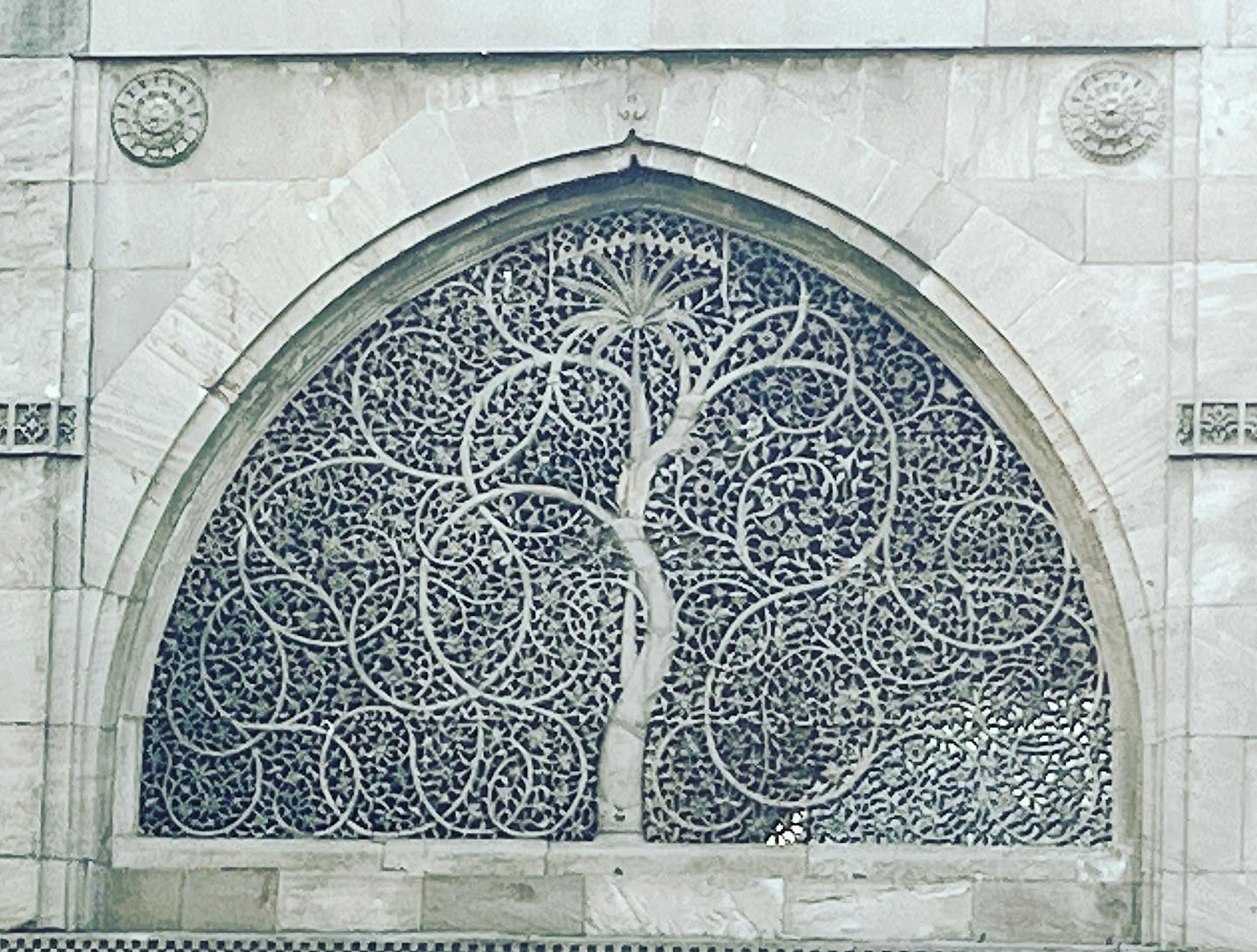 Another view of the Siddi Sayyid tree-of-life
Another view of the Siddi Sayyid tree-of-life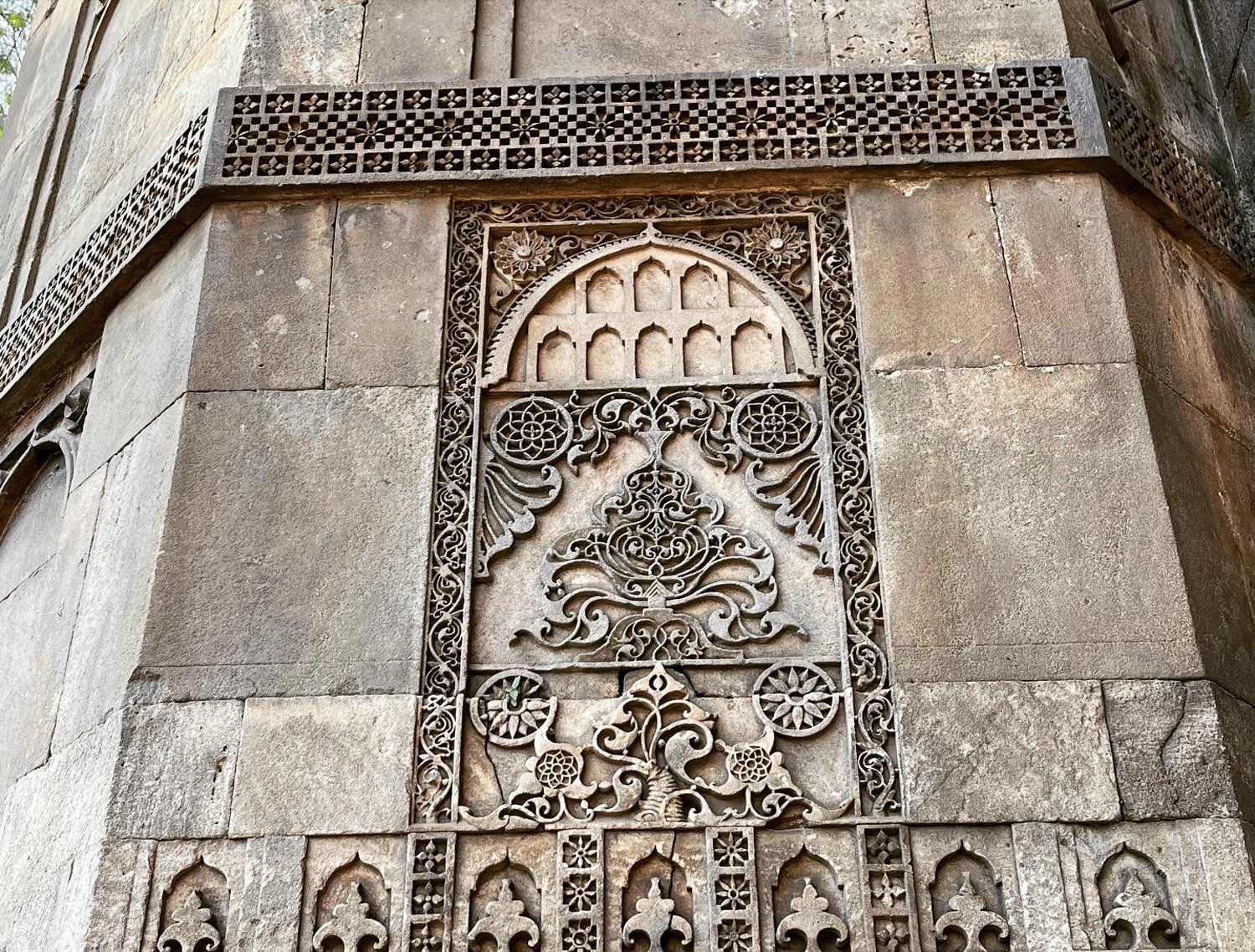 Floral patterns on the mosque’s pillars
Floral patterns on the mosque’s pillars
This small mosque was built in 1573 in the very last year of the Gujarat Sultanate before it was invaded and swallowed by the mighty Mughals. It was built by Shaikh Sayyid, a freed Abyssinian slave from Ethiopia who arrived in Gujarat via the slave stations of Yemen, to serve in the retinue of rich generals and traders of the time. He had joined the forces of Jhajjar Khan – a top Abyssinian general under the Gujarat Sultan – and in time was given a jagir, becoming a prominent noblemen renowned for his extensive library and do-good works.
Shaikh Sayyid died in 1576 and is buried in a simple grave, open to the sky, beside the mosque that he built. As I stood in the warm speckled light created by the jaalis, with pigeons cooing in the courtyard outside, I wondered about this man and his remarkable story. For, Shaikh Sayyid has left us an extraordinary architectural legacy from India’s African diaspora, who were bought to these shores as slaves and rose to be military commanders and patrons of art and architecture.
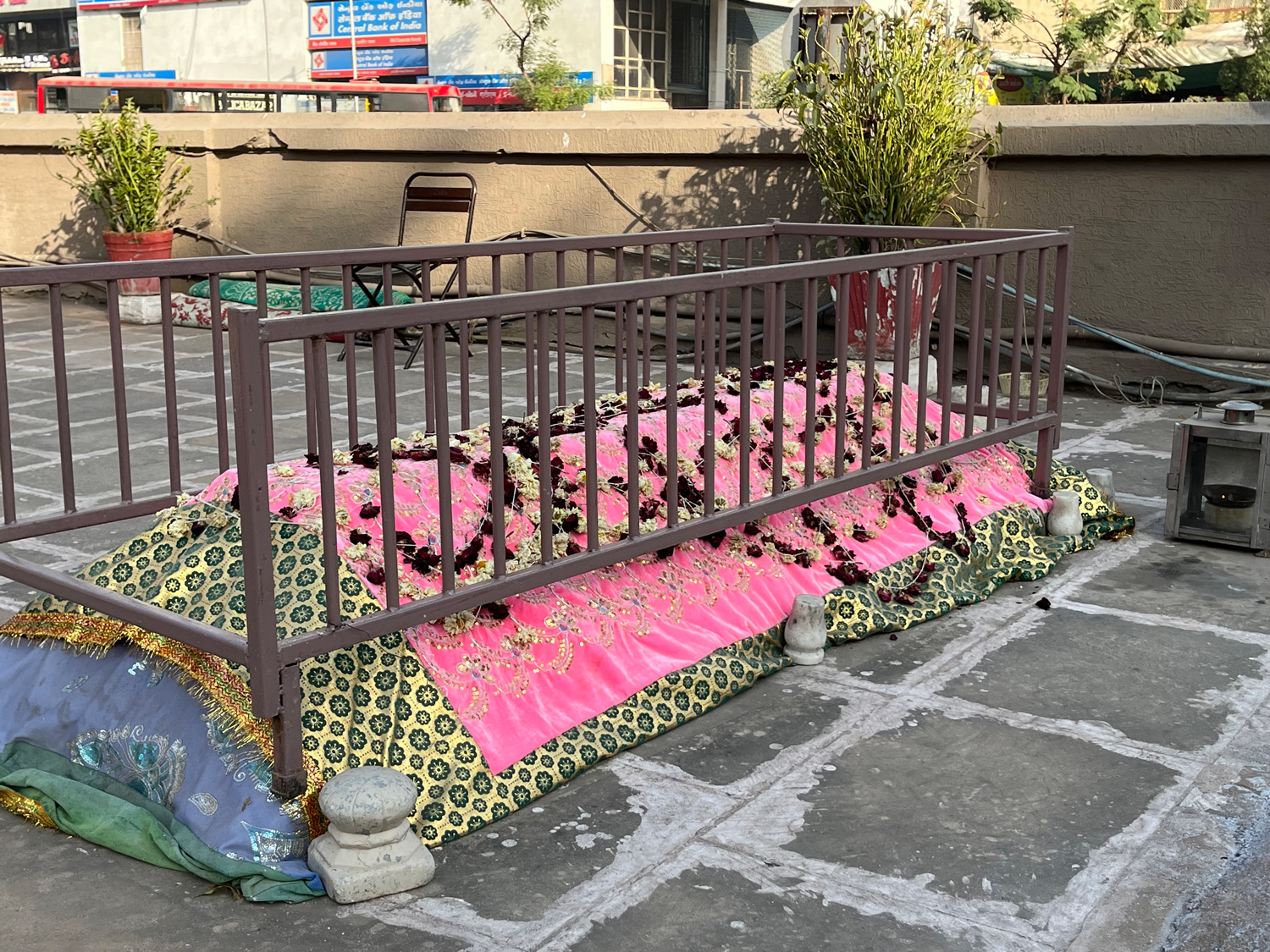 Shaikh Sayyid’s grave is in a quiet corner of the mosque that he built; little could he have realized the fame his legacy would achieve
Shaikh Sayyid’s grave is in a quiet corner of the mosque that he built; little could he have realized the fame his legacy would achieveTime for a quick chai in a unique setting…
Just across the road from Sidi Sayyid is Lucky Restaurant, a much-patronized Ahmedabad institution that is famous for its quirky setting.
Even though this may be a detour from the “discover heritage mosques” itinerary, but it’s well worth a visit – to discover another charming slice of Ahmedabad’s landscape.
The story goes that when the owner of Lucky was faced with the fact that the land he was to open his restaurant in included graves, he decided to simply build around them, and make the burial plots the main attraction.
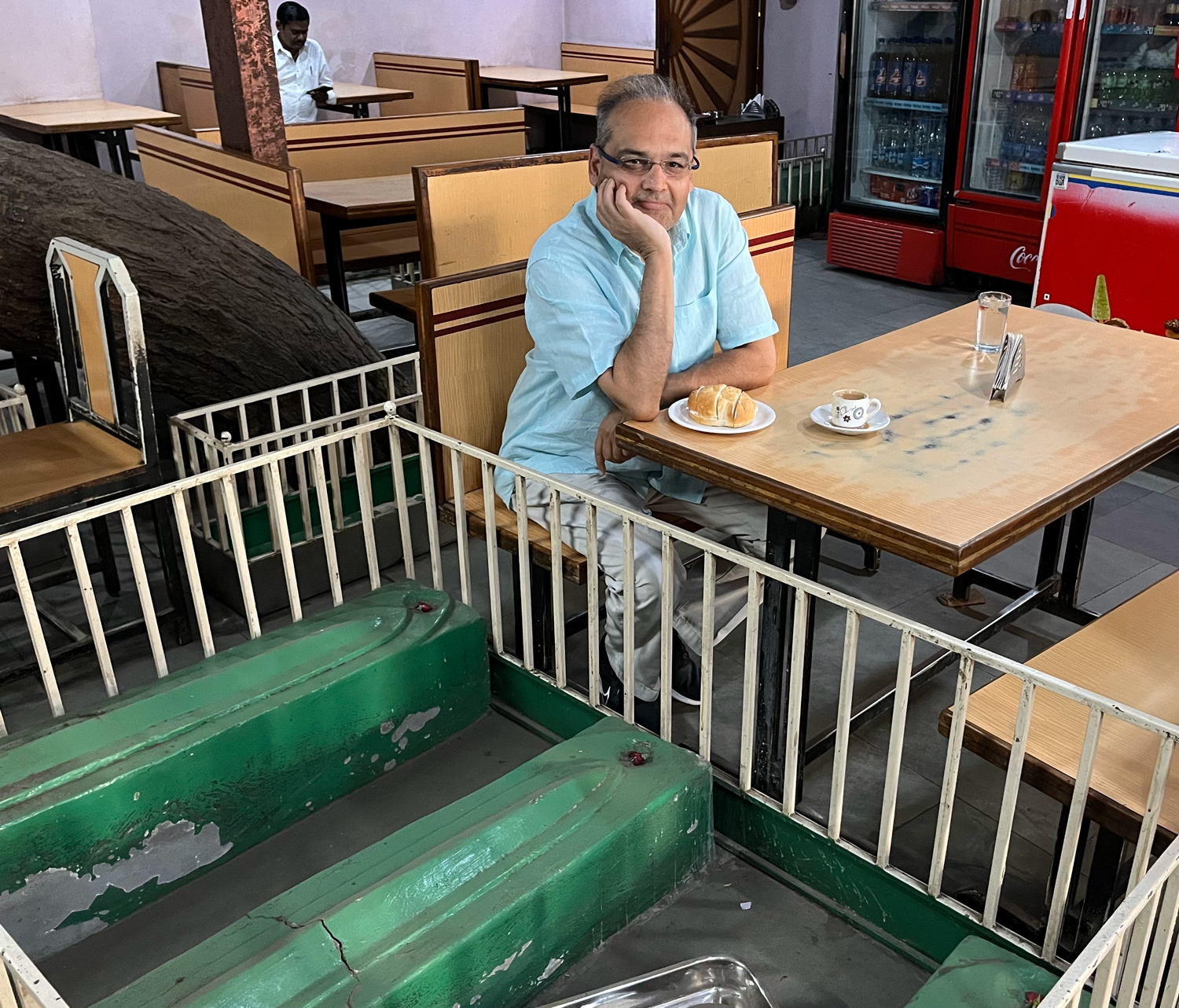 A cup of chai and bun maska with the unique breakfast companions
A cup of chai and bun maska with the unique breakfast companions
Green stone graves are scattered across the restaurant as customers navigate their way to the tables between the graves. Steel bars surround them to stop us treading on the dead. Nobody really knows who the graves belong to; but they probably are of fallen soldiers, as this area – being close to the Sabarmati riverbed – was in the past a battleground for innumerable raids on city.
The graves are cleaned each morning with fresh flowers and incense, and have been the luck-factor for Lucky Restaurant. Among its regular patrons was no less than the artist MF Hussain who has even painted a wall in gratitude!
It’s a great way to visit someplace unique; people watching, absorbing your thoughts and fueling oneself for the morning ahead.
The gem-like beauty of Rani Sipri’s mosque
A short ten-minute drive away, past the bastions of Gaikwad Haveli, is Rani Sipri’s mosque and tomb.
This complex was built by Rani Sipri, the Hindu queen of sultan Mahmud Begada, in 1514, about sixty years before Sidi Sayyid was built. Mahmud Begada was the Gujarat Sultanate’s longest serving and most prominent ruler, being king for 54 years from 1458 to 1511. It was in his reign that the Gujarat Sultanate was at its strongest and biggest, with Begada being well recognized for his military conquests, patronage of art and culture, and the successful administration of his kingdom.
Similar to Sidi Sayyid, this mosque too is of a small and intimate size. But, it is much more intricately carved with every inch of its walls and minarets covered with Hindu and Islamic motifs with a bewildering attention to detail. The use of yellow sandstone seems to absorb the sunshine with the buildings reflecting a warm golden hue, brilliantly offsetting the clear blue skies above.
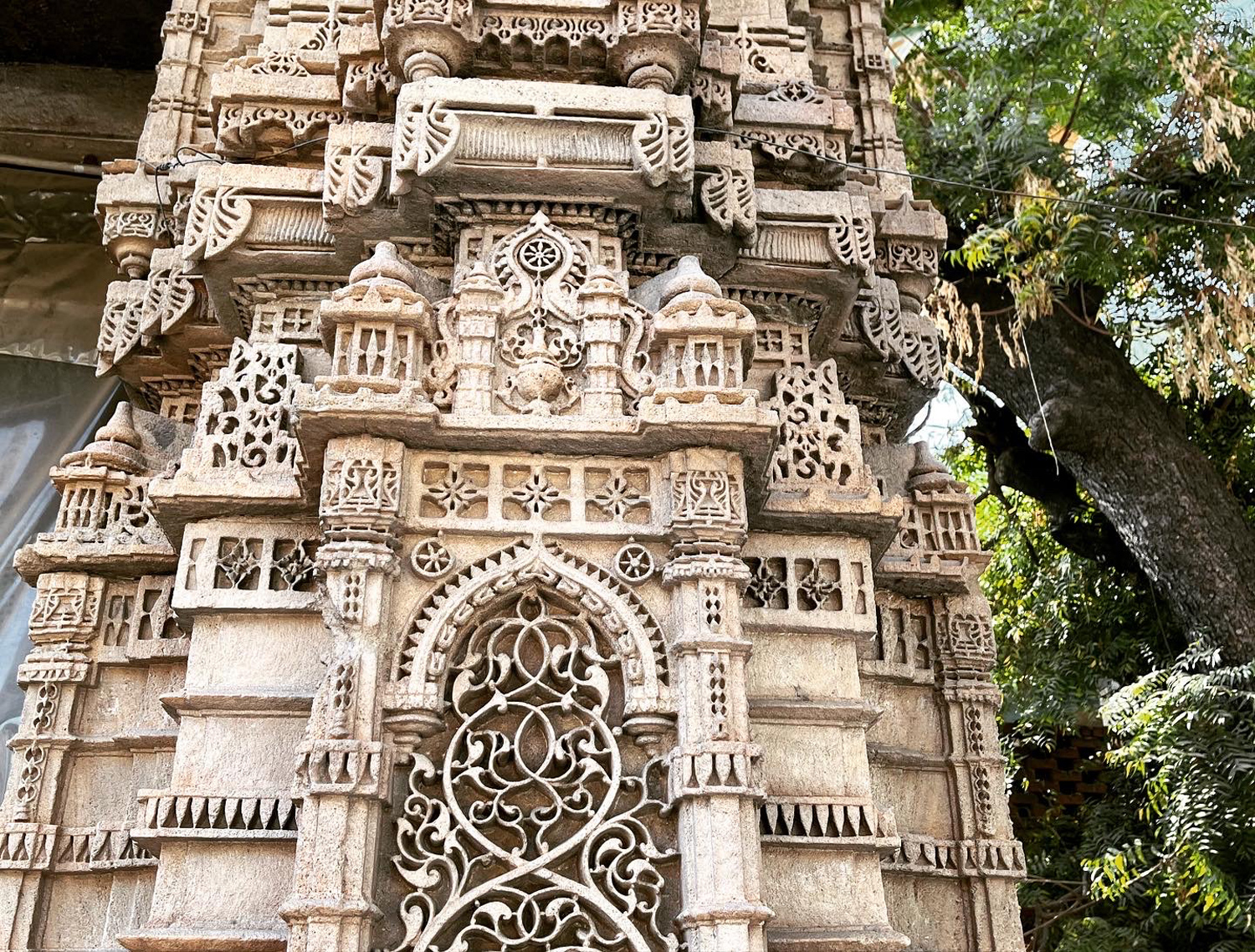 Every inch of the minarets is intricately carved in primarily Hindu style
Every inch of the minarets is intricately carved in primarily Hindu style
I entered the mosque to study its pillars and the internal walls. Unfortunately, parts of it is disfigured with ugly wires and loudspeakers, but thankfully the delicacy of the whole – including Rani Sipri’s silent tomb opposite the mosque – is retained.
 Ranis Sipri mosque glows golden as it offsets a cloudless blue sky… literally poetry in stone
Ranis Sipri mosque glows golden as it offsets a cloudless blue sky… literally poetry in stoneThe grandeur and commanding presence of Jama Masjid
The last stop on this mini-tour is the big daddy of them all, the Jama Masjid.
When Sultan Ahmed Shah founded Ahmedabad as a new city in 1411, part of his grand vision was to have a huge, imposing city mosque. The Jama Masjid took ten years to build and when completed in 1424 was the biggest mosque in the country. Even today, six hundred years after it was built, it continues to inspire awe.
I couldn’t fully appreciate the size and scale of Jama Masjid from the outside because its entrance was crowded between small shops. But once I stepped inside the vast paved courtyard I knew immediately that I was standing in one of the special places of medieval India.
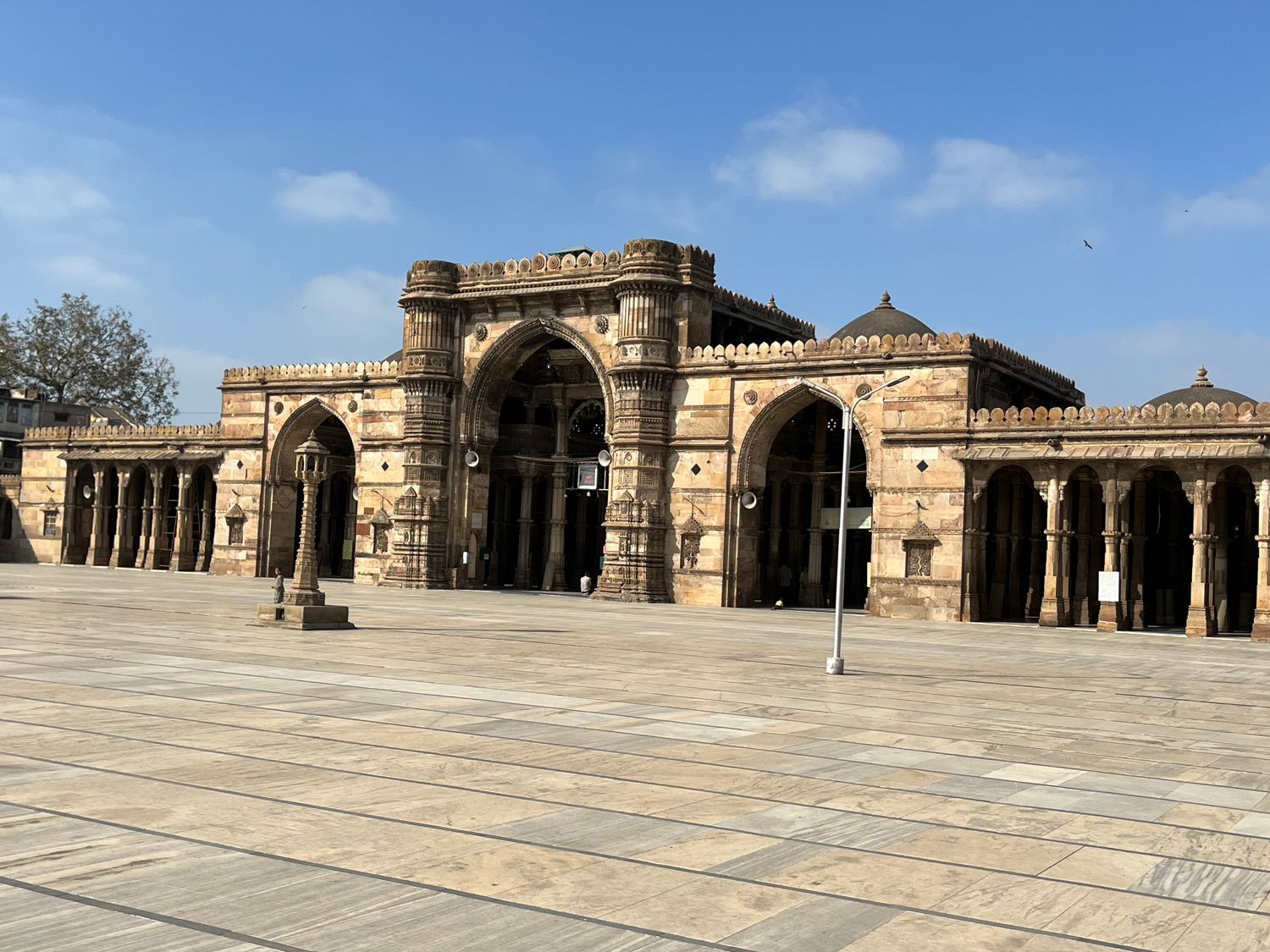 The sweeping vista of Jama Masjid was one of the focal points of a flourishing Ahmedabad
The sweeping vista of Jama Masjid was one of the focal points of a flourishing Ahmedabad
By now, with the midday sun high overhead, walking barefoot on the smooth marble was hot on the feet. The courtyard has a shaded ablution tank at its center – which was shimmering with inviting, clear water – and I noticed the floor getting cooler closer to the tank. There was a feeling of tranquility and calm, with a cool breeze wafting through the open space.
The courtyard is ringed by corridors on three sides and the western arm is the main prayer hall, with an arched entrance and flanked by massive minarets on either side. The crowns of these minarets collapsed in the earthquake of 1819, leaving only the lower portions surviving. I tried imagining what the pillars would have looked like in their full glory, for even today they are hugely impressive; ornately carved in typical Gujarat style mixing Hindu, Jain, Islamic elements.
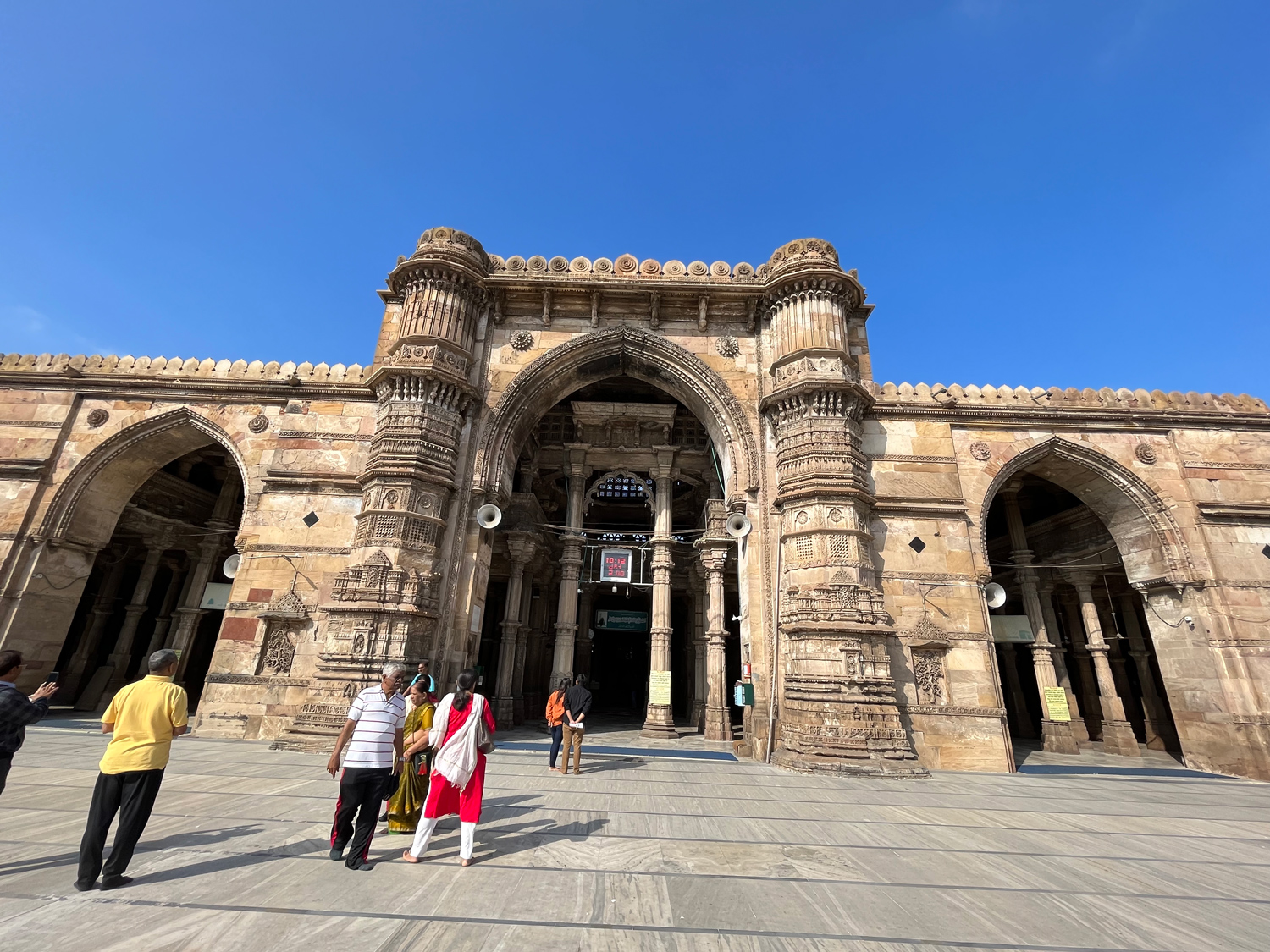 Imagine these minarets soaring double its height; the two flanking towers collapsed in the 1819 earthquake leaving only the lower portions surviving
Imagine these minarets soaring double its height; the two flanking towers collapsed in the 1819 earthquake leaving only the lower portions surviving
Inside, the prayer hall is cool and hushed with its most striking feature being the 260 stone pillars that dot the hall – which is more reminiscent of a Hindu temple. As the sunlight filtered through the pillars, striking the walls but not directly hitting the floor, I wondered if Sultan Ahmed Shah himself would have led the prayers here, proud of his legacy that would survive the ages. Ahmed Shah is buried just a stone’s throw from the mosque, along with his son and grandson.
I left the tranquility of Jama Masjid for the hurly-burly of Manek chowk, the historical heart of Ahmedabad where it all began for this city. I had spent a wonderful morning seeing, photographing and understanding a beautiful layer of the city’s history; its brilliant mosque architecture sprinkled across the city as little gems, but taken for granted by most Amdavadis.
Details and things you may want to know…
- all the mosques are easily accessible. You can simply walk in and spend as much time, and take as many photographs as you want. Enjoy.
- Try and wear comfortable slip-on shoes as you need to remove them at the mosques. Also, its best to wear appropriate clothes (eg, no shorts etc)
- the namaz (prayer) timings are 6am, 1pm, 5pm, 6.30pm and 8pm. The most convenient time for the mosque visits is between 8am-12.30 pm when the mosques will be empty
- Namaz lasts about 15 minutes. In case you find namaz ongoing, simply step out and wait for it to end, and then continue with your visit.
- In all the mosques you will find two features : a water-tank for wuzu or the ritual cleaning before prayers, and a mihrab – or carved niche in the wall that indicates the direction of prayer.

